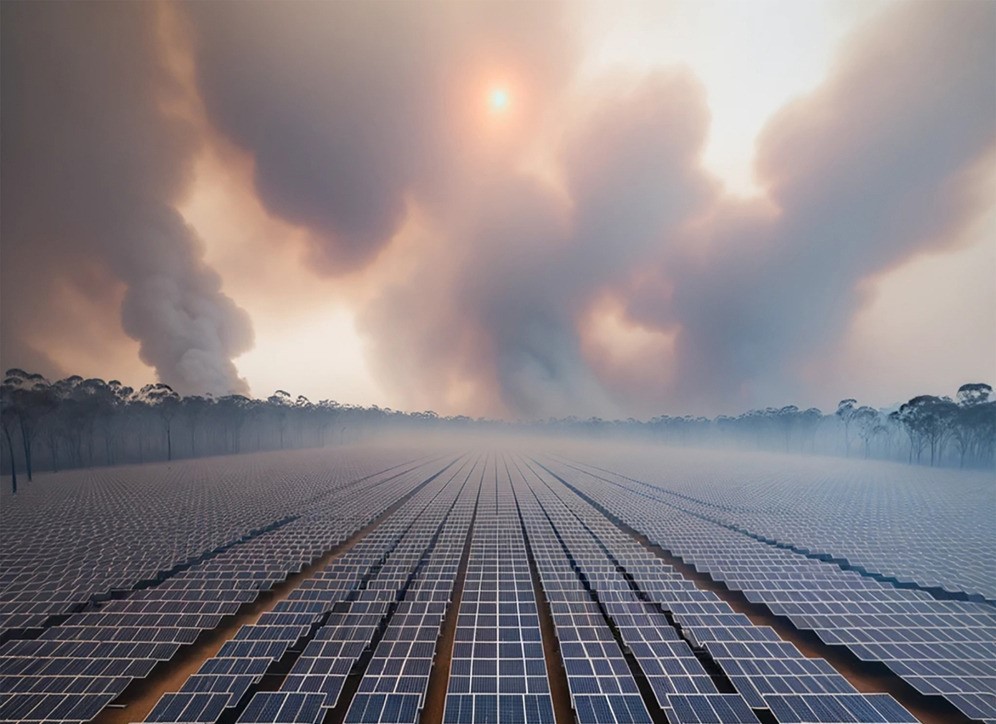Researchers from the University of New South Wales (UNSW) in Australia have investigated the effects of wildfires on the electricity production of rooftop PV systems and have concluded that residential solar arrays could be used for wildfire detection and monitoring, due to their sensitivity to smoke.
In the study “Quantifying the impact of wildfire smoke on solar photovoltaic generation in Australia,” published in eScience, the academics explained their analysis considered the wildfires that hit their home country between 2019 and 2020, which they described as disasters of national and even global proportions. “The fire burnt an estimated area of 243,000 km2, led to the loss of 33 lives, killed countless animals, destroyed thousands of buildings, and released more than 700 million tonnes of CO2 into the atmosphere,” they explained.
The academics stressed that wildfire smoke affects PV system performance by reducing solar irradiance and causing soiling through the deposition of particles on the solar panels.
Their analysis comprised 160 residential PV installations with a power range of 0.5 kW to 5.4 kW distributed across New South Wales and considered the impact of fine particle concentration on PV performance, which they calculated as a function of the PM2.5 concentration by self-referencing periods without significant PM2.5 concentration. Fine particles in the air are commonly measured as PM2.5. “The PM2.5 concentration represents the number of PM2.5 particles per unit volume of air at the altitude of the PV system,” the scientists specified.
A first analysis of the data showed that the strongest solar power production reductions were seen in the mornings and evenings, with the least impact being at around 1 p.m. “A complete explanation for this symmetrical impact is not yet understood — the air mass AM-correction [air mass-correction] may be incomplete, or daily wind and weather patterns may play a role,” the researchers said.
They also determined the impact of the time of day and distance between the site location and PM2.5 measurement station. This, in turn, allowed them to intrinsically correct for soiling when determining power losses due to wildfire smoke.
The average reduction in power generation for all the analyzed systems was found to be around 13% per 100 μg/m3 for AM1.0. The total energy loss over the 71 days for all 160 systems was estimated at around 4.2%, with total state-wide energy loss reaching approximately 175 ± 35 GWh during the wildfire period.
The research team also found that residential PV systems could be used as a rough predictor for PM2.5 concentration. “PV systems do not need to be cleaned or maintained beyond normal maintenance for a reliable correlation between PV and PM2.5 to be measured,” it stated. “PV systems could serve as an early warning detection of wildfires by providing temporal and spatial information on the presence and approximate concentrations of wildfire smoke.”
Furthermore, they added, rooftop PV systems could be also utilized to make predictions about insolation, temperature and wind.
This content is protected by copyright and may not be reused. If you want to cooperate with us and would like to reuse some of our content, please contact: editors@pv-magazine.com.




By submitting this form you agree to pv magazine using your data for the purposes of publishing your comment.
Your personal data will only be disclosed or otherwise transmitted to third parties for the purposes of spam filtering or if this is necessary for technical maintenance of the website. Any other transfer to third parties will not take place unless this is justified on the basis of applicable data protection regulations or if pv magazine is legally obliged to do so.
You may revoke this consent at any time with effect for the future, in which case your personal data will be deleted immediately. Otherwise, your data will be deleted if pv magazine has processed your request or the purpose of data storage is fulfilled.
Further information on data privacy can be found in our Data Protection Policy.